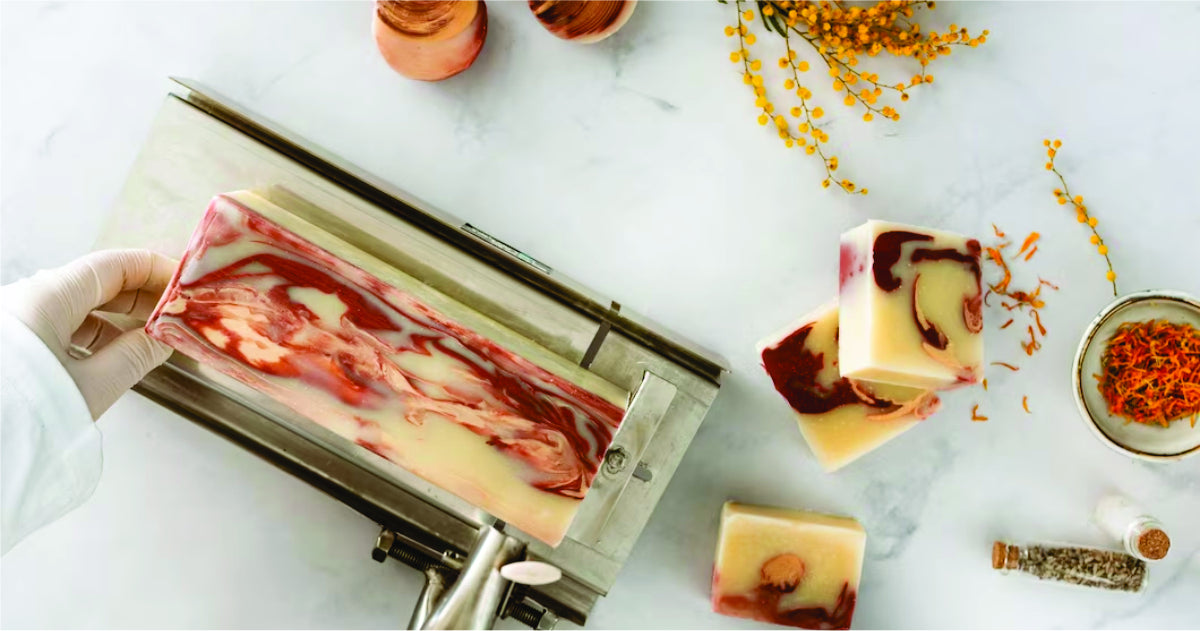Melt & Pour Soap for Beginners

Making your own soap can be a rewarding and creative hobby. Melt and pour soap is an excellent starting point for beginners because it involves pre-made soap bases that are easy to work with and require minimal equipment. This guide will take you through the basics of making melt and pour soap, including materials, steps, and tips for customization.
Materials Needed:
-
Soap Base: Choose a melt and pour soap base, such as glycerin or shea butter base. These are readily available and come in various formulations (clear, opaque, with additives like goat's milk or honey).
-
Cutting Tool: A knife or soap cutter to cut the soap base into smaller pieces for melting.
-
Microwave or Double Boiler: For melting the soap base. A microwave is convenient and quick, while a double boiler provides more control over temperature.
-
Heat-Safe Container: A microwave-safe or heat-safe glass measuring cup or bowl for melting the soap base.
-
Stirring Utensil: A spoon or spatula dedicated to soap making.
-
Colorants: Soap-safe colorants like liquid soap dyes, mica powders, or natural colorants such as turmeric or spirulina.
-
Fragrance or Essential Oils: Optional for scenting your soap. Ensure they are skin-safe and suitable for soap making.
-
Additives: Optional additives such as exfoliants (oatmeal, coffee grounds), dried herbs, or botanicals (lavender buds, rose petals).
-
Molds: Silicone molds work best for melt and pour soap due to their flexibility and ease of releasing the soap.
-
Rubbing Alcohol (Isopropyl Alcohol): To prevent bubbles from forming on the surface of the soap.
Step-by-Step Guide:
1. Prepare Your Workspace
- Clean and sanitize all equipment and surfaces before starting.
2. Cut and Melt the Soap Base
-
Cutting: Slice the soap base into small chunks or cubes using a knife or soap cutter. This helps the soap melt evenly.
-
Melting Options:
- Microwave: Place the soap chunks in a microwave-safe container. Heat in short bursts (30 seconds to 1 minute) until melted, stirring in between to ensure even melting.
- Double Boiler: Fill the bottom pot with water and bring to a simmer. Place the soap chunks in the top pot or heat-safe bowl. Stir occasionally until melted.
3. Add Color and Scent (Optional)
-
Color: Add soap-safe colorants (liquid dyes, mica powders, natural colorants) a few drops at a time until desired color is achieved. Stir gently to combine.
-
Scent: Add fragrance or essential oils, about 1 teaspoon per pound of soap base. Stir gently to distribute evenly.
4. Add Optional Additives
-
Exfoliants: Stir in additives like oatmeal, coffee grounds, or finely ground pumice for exfoliating properties.
-
Botanicals: Sprinkle dried herbs or petals into the soap molds for decorative effect.
5. Pour into Molds
- Carefully pour the melted soap mixture into the silicone molds. Tap the molds gently on the counter to release any air bubbles.
6. Spritz with Rubbing Alcohol
- Lightly spray the surface of the poured soap with rubbing alcohol to eliminate bubbles and ensure a smooth finish.
7. Cooling and Setting
- Allow the soap to cool and harden completely, typically within 1-2 hours at room temperature.
8. Unmolding and Storage
-
Once fully cooled and hardened, gently pop the soap out of the molds.
-
Store the finished soap in a cool, dry place or wrap in plastic wrap to prevent glycerin dew (moisture beads on the surface).
Tips for Success:
-
Temperature Control: Avoid overheating the soap base, as it can scorch or develop a rubbery texture.
-
Layering and Embedding: Experiment with pouring multiple layers or embedding small objects (like toys or herbs) in the soap for creative designs.
-
Customization: Adjust color, scent, and additives to create personalized soap blends that suit your preferences.
-
Safety: Work in a well-ventilated area and handle hot soap and equipment carefully to prevent burns.
Final Thoughts
Melt and pour soap making is a fun and accessible way to explore the art of soap crafting without the complexities of handling lye. With a few basic materials and creative ideas, you can create beautiful, customized soaps that make great gifts or additions to your personal skincare routine. Enjoy the process of experimenting with colors, scents, and textures as you craft your own unique bars of soap!
2 comments
-
This is so helpful thank you 😊 on
I’m new at this and found it soooo helpful



Thanx for all the information